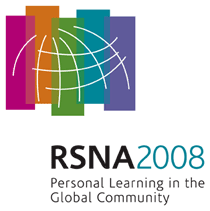
Abstract Archives of the RSNA, 2008
LL-GI4313-R07
Comparison of Respiratory-triggered and Single Breath-hold Diffusion-weighted Imaging in the Evaluation of Focal Liver Lesions
Scientific Posters
Presented on December 4, 2008
Presented as part of LL-GI-R: Gastrointestinal
Harsh Kandpal, Abstract Co-Author: Nothing to Disclose
Raju Sharma MD, Abstract Co-Author: Nothing to Disclose
Kumble S Madhusudhan MD, Presenter: Nothing to Disclose
Kulwant Singh Kapoor, Abstract Co-Author: Nothing to Disclose
1. Comparison of image quality of respiratory-triggered (RT- DWI) and single breath-hold diffusion-weighted MR imaging (BH-DWI) in evaluating focal liver lesions
2. To assess the agreement in the ADC values of liver and hepatic lesions between RT-DWI and BH-DWI
Forty eight patients (27 males, 21 females, mean age: 45.2 years) with focal liver lesions underwent RT-DWI (acquisition time ~ 120s) and BH-DWI (acquisition time 20s) in addition to routine MR imaging. Both sequences had identical imaging parameters (b values: 0, 500 s/mm2 parallel imaging acceleration 2) except the number of signal averages (6 for RT-DWI and 1 for BH-DWI). Total 92 lesions (maximum 3 lesions / patient) were evaluated (hemangioma: 11, cyst: 11, abscess: 6, hepatoma: 12, metastases: 38, tuberculoma: 4, lymphoma: 3, FNH: 3, hydatid cyst, biliary cystadenocarcinoma, cholangiocarcinoma, fibrous tumor: 1 each). Lesions were confirmed either by typical imaging appearance, histopathology or follow-up. Signal-to-noise ratio of liver (SNR) and contrast-to-noise ratio (CNR) of the lesions was measured in RT-DWI and BH-DWI (taking into account the pitfalls of noise measurement in parallel imaging) and the significance was calculated using student’s t test. The ADC values of normal liver and each category of liver lesions in the two sequences was compared for agreement using Pearson’s coefficient and reliability analysis scale.
Lesions with restricted diffusion (malignant, abscess) had a higher CNR in RT-DWI than in BH-DWI (p value < 0.001). The SNR of the normal liver was better on the RT-DWI than on BH-DWI (p value <0.001). The ADC values measured by the two techniques showed good agreement for each category of lesion and for normal liver (interitem correlation-0.88; reliability coefficient alpha-0.94; interclass correlation-0.88). In addition, the standard deviation of ADC values of normal liver was similar in the two sequences.
RT-DWI provides better CNR for detection of focal liver lesions than BH-DWI. ADC values of liver lesions and normal liver show good agreement in the two sequences.
RT-DWI should be preferred over the BH-DWI at 1.5 Tesla for the evaluation of focal liver lesions, as it provides better image quality and reliable ADC values, with only minimal time penalty.
Kandpal, H,
Sharma, R,
Madhusudhan, K,
Kapoor, K,
Comparison of Respiratory-triggered and Single Breath-hold Diffusion-weighted Imaging in the Evaluation of Focal Liver Lesions. Radiological Society of North America 2008 Scientific Assembly and Annual Meeting, February 18 - February 20, 2008 ,Chicago IL.
http://archive.rsna.org/2008/6012602.html

